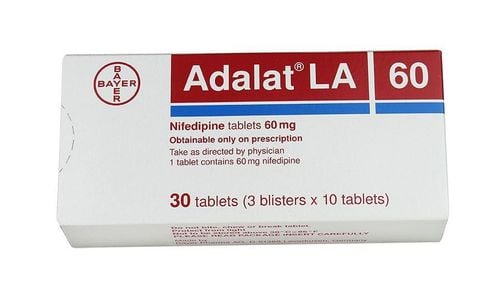This is an automatically translated article.
Today, childhood diabetes is no longer rare. In fact, type 2 diabetes usually has its onset in adulthood. Type 2 diabetes in children is a chronic disease and significantly affects the health and life of children later in life.
1. Symptoms of type 2 diabetes in children
It is difficult to recognize or detect the symptoms of type 2 diabetes in children. Most disease progresses gradually, making it difficult to recognize symptoms. In some cases, the child does not have any symptoms of the disease.
To know if your child has type 2 diabetes, parents need to watch for the following signs:
Excessive fatigue: If your child is unusually sleepy or tired, it could be a sign shows that blood sugar is affecting the child's energy. Frequent urination: Too much blood sugar can cause your child to urinate more often. Excessive thirst: Excessive thirst in children can be a sign of type 2 diabetes when blood sugar is high. Hunger: Children with diabetes often do not have enough insulin to supply the body's cells to function. At that time, food is the best source of energy, so children often feel hungry. This condition is also known as polycythemia vera or neurosis. Slow-healing sores: This is one of the signs of type 2 diabetes. Dark skin: Insulin resistance can cause darkening of the skin, especially in the neck and armpit areas. If your child has type 2 diabetes, parents may notice dark areas on the neck and armpits.
2. Causes of Type 2 Diabetes in Children
There are 2 main reasons that are believed to cause type 2 diabetes in children. They are:
Overweight: Being overweight is strongly associated with the development of type 2 diabetes in children. Children who are overweight are more resistant to insulin. As the body tries to regulate insulin, high blood sugar leads to diabetes. Heredity: Children are at risk for type 2 diabetes if both parents, or one parent, have diabetes.
3. How is type 2 diabetes diagnosed in children?
Type 2 diabetes in children diagnosed by a pediatrician. If the doctor suspects that your child is sick, he or she will order tests for urine sugar, fasting sugar, glucose tolerance, or an A1C test.
Childhood diabetes usually begins in children between 10 and 19 years of age. The following factors increase the risk of type 2 diabetes in children, including:
Children who have a close relative or sibling with type 2 diabetes. Children with insulin resistance manifestations such as dark underarm skin and neck. Children are overweight and obese.
4. Treatment of type 2 diabetes in children
Treatment of type 2 diabetes in children is similar to treatment in adults. The use of drugs in children should be closely monitored. However, before starting any medication, your child should make lifestyle and dietary changes to keep his blood sugar under control. When diet and exercise don't work, your doctor will prescribe the right medication.
Treatment of childhood diabetes includes the following:
Blood glucose monitoring: Monitoring blood sugar levels with a daily home blood glucose meter plays an important role, both helping to monitor blood sugar and monitoring. response to treatment. Diet and exercise: Your doctor will recommend diet and exercise for your child. To ensure the correct implementation of the doctor's recommendations, parents need to monitor the amount of carbohydrates that the child consumes during the day, supervise the child's exercise with appropriate activities to help the child maintain a reasonable weight, and reducing the negative effects of type 2 diabetes.
5. Potential complications of childhood diabetes
Children with type 2 diabetes are at increased risk for more serious health problems as they grow up, including cardiovascular problems. Heart disease is one of the common complications in children with type 2 diabetes.
Other complications include eye problems and nerve damage. Children with type 2 diabetes may experience complications and the disease progress more quickly than type 1 diabetes in children.
Children can also have high blood pressure, low blood sugar and difficulty controlling their weight if they have type 2 diabetes. In addition, impaired kidney function, impaired vision can also occur as children get older.
6. Can childhood diabetes be prevented?
Parents can help their children avoid diabetes by encouraging them to take the following steps:
Practice healthy habits: Children should eat a balanced diet and limit foods high in sugar and refined flour. This diet will reduce the risk of being overweight and developing diabetes in children. Exercise: Regular exercise is important to prevent diabetes. Sports or games are also helpful, being great ways to keep kids active and active. Limit screen time and encourage children to play outside to reduce the risk of developing type 2 diabetes in children. Maintain a healthy weight: A healthy diet and exercise routine can help children maintain a healthy weight, an important factor in preventing diabetes in children from progressing. Set an example for children: To encourage children to do these things, first of all, parents need to set an example for their children to follow. Type 2 diabetes in children is becoming more and more common, partly due to genetics, in addition to unhealthy diets, sedentary habits leading to overweight and obesity.
Please dial HOTLINE for more information or register for an appointment HERE. Download MyVinmec app to make appointments faster and to manage your bookings easily.













